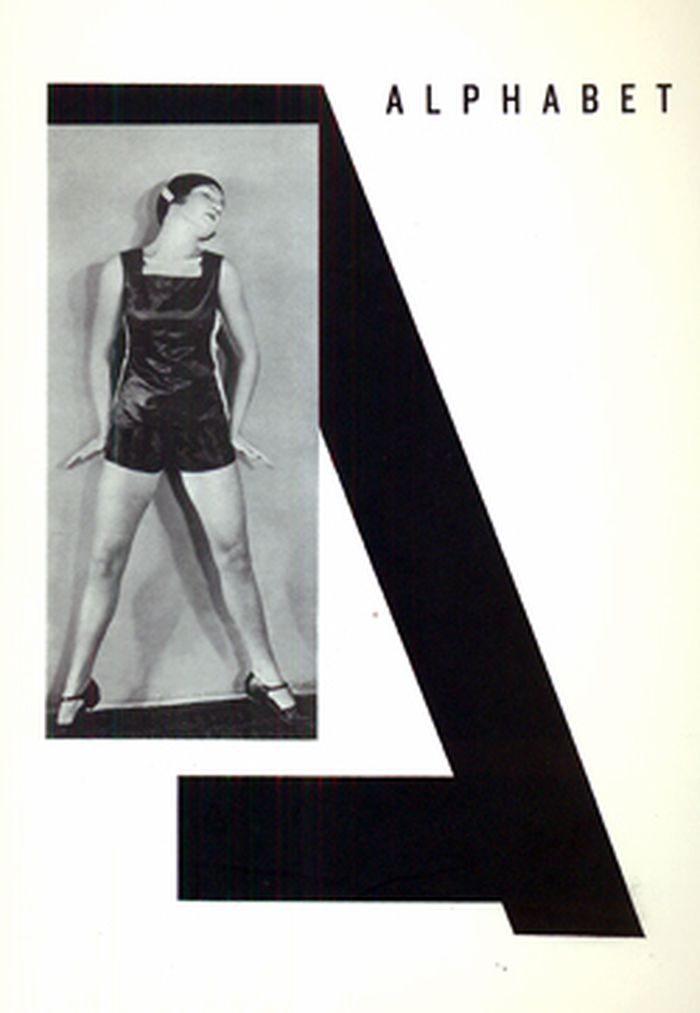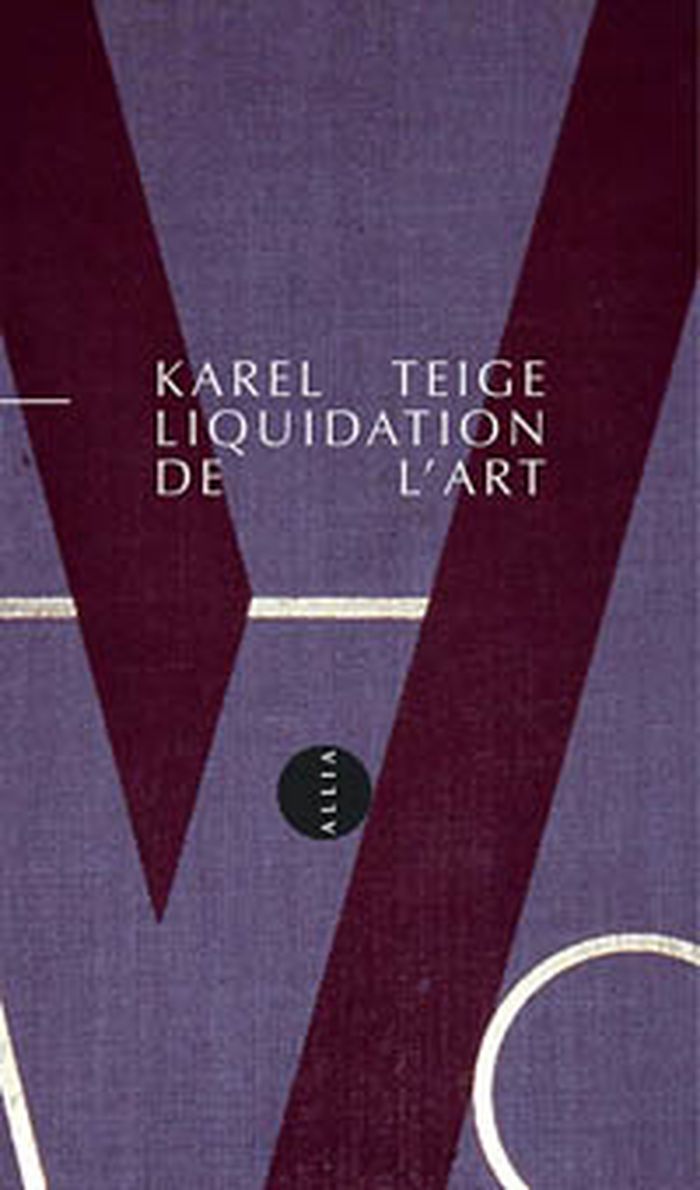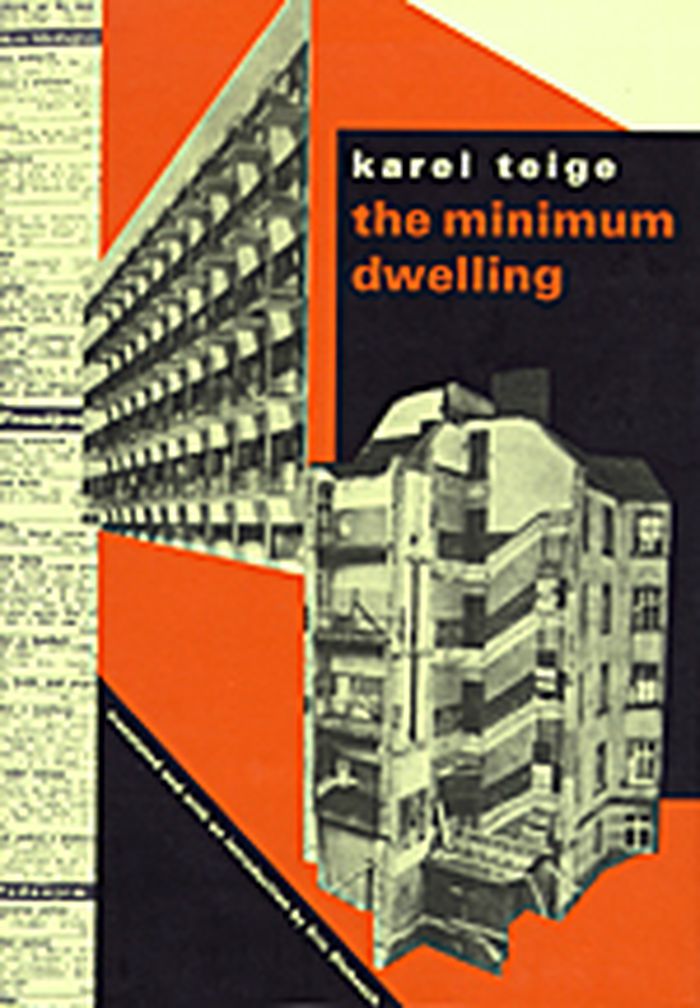Alphabet postcard book
$22.00
(disponible sur commande)
Résumé:
Choreographed by dancer Milca Mayerová into a photo-ballet in twenty-four hypnotic poses. Each move in the dance is made to the visual counterpoint of Karel Teige’s astonishing typographic music.
Alphabet postcard book
Actions:
Prix:
$22.00
(disponible sur commande)
Résumé:
Choreographed by dancer Milca Mayerová into a photo-ballet in twenty-four hypnotic poses. Each move in the dance is made to the visual counterpoint of Karel Teige’s astonishing typographic music.
livres
$97.50
(disponible en magasin)
Résumé:
The writings of graphic designer, prolific critic, and avant-garde partisan Karel Teige (1900-1951) represent one of the great forgotten legacies of modern artistic theory. Together with Jaromír Krejcar and Josef Chocol, he founded the radical Devetsil group in 1920, an(...)
Modern architecture in Czechoslovakia and other writings
Actions:
Prix:
$97.50
(disponible en magasin)
Résumé:
The writings of graphic designer, prolific critic, and avant-garde partisan Karel Teige (1900-1951) represent one of the great forgotten legacies of modern artistic theory. Together with Jaromír Krejcar and Josef Chocol, he founded the radical Devetsil group in 1920, an organization committed to promoting international modernism through manifestos and polemics. After meeting Le Corbusier in Paris in 1922, Teige increasingly turned his attention to architecture. Over the next decade he crystallized his ideas on functionalist and constructivist practice through relationships with ideological allies including Adolf Behne, Theo van Doesburg, Hannes Meyer, and El Lissitzky. In "Modern Architecture in Czechoslovakia" (published in 1930), Teige both publicized the modernist efforts of his native country, and aligned them with the avant-garde efforts of the East and West. Now in English for the first time, this work is supplemented by a selection of Teige's other writings on art and architecture. An introduction by Jean-Louis Cohen traces the diverse pursuits of this multifaceted figure.
livres
janvier 2001, Los Angeles
Modernisme
Liquidation de l'art
$11.95
(disponible sur commande)
Résumé:
“Et l’art est le manuscrit immédiat de la vie.” Liquidation de l’art contient les premiers écrits de Karel Teige et jette les bases théoriques d’une nouvelle création où “le nouvel art ne sera plus l’art”. En témoignent les reproductions nombreuses et étonnantes qui émaillent ces textes comme ils illustrent parfaitement l’alliance, à première vue incongrue, entre(...)
Liquidation de l'art
Actions:
Prix:
$11.95
(disponible sur commande)
Résumé:
“Et l’art est le manuscrit immédiat de la vie.” Liquidation de l’art contient les premiers écrits de Karel Teige et jette les bases théoriques d’une nouvelle création où “le nouvel art ne sera plus l’art”. En témoignent les reproductions nombreuses et étonnantes qui émaillent ces textes comme ils illustrent parfaitement l’alliance, à première vue incongrue, entre poétisme et constructivisme.
Théorie de l’art
The minimum dwelling
$96.00
(disponible en magasin)
Résumé:
Karel Teige (1900–1951), one of the most important figures of avant-garde modernism of the 1920s and 1930s, influenced virtually every area of art, design, and urban thinking in his native Czechoslovakia. His "Minimum dwelling", originally published in Czech in 1932, and appearing now for the first time in English, is one of the landmark architectural books of the(...)
The minimum dwelling
Actions:
Prix:
$96.00
(disponible en magasin)
Résumé:
Karel Teige (1900–1951), one of the most important figures of avant-garde modernism of the 1920s and 1930s, influenced virtually every area of art, design, and urban thinking in his native Czechoslovakia. His "Minimum dwelling", originally published in Czech in 1932, and appearing now for the first time in English, is one of the landmark architectural books of the twentieth century. "The minimum dwelling" is not just a book on architecture, but also a blueprint for a new way of living. It calls for a radical rethinking of domestic space and of the role of modern architecture in the planning, design, and construction of new dwelling types for the proletariat. Teige shows how Gropius, Le Corbusier, Mies van der Rohe, and others designed little more than new versions of baroque palaces, mainly for the new financial aristocracy. Teige envisioned the minimum dwelling not as a reduced version of a bourgeois apartment or rural cottage, but as a wholly new dwelling type built on the cooperation of architects, sociologists, economists, health officials, physicians, social workers, politicians, and trade unionists. The book covers many subjects that are still of great relevance. Of particular interest are Teige’s rejection of traditional notions of the kitchen as the core of family-centered plans and of marriage as the foundation of modern cohabitation. He describes alternative lifestyles and new ways of cohabitation of sexes, generations, and classes. The detailed programmatic chapters on collective housing remain far ahead of current thinking, and his comments on collective dwelling presage communal living experiments of the 1960s and 1970s, as well as the communal facilities in contemporary condominium buildings and retirement communities. Translated and introduced by Eric Dluhosch.
Théorie de l’architecture


